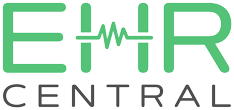Maximizing Revenue and Minimizing Wait Times: Telehealth Strategies for Urgent Care Providers
In today’s fast-paced healthcare environment, urgent care providers face the dual challenge of optimizing revenue while ensuring prompt access to care for patients. Fortunately, Telehealth offers innovative solutions to address both concerns simultaneously. In this blog

post, we’ll explore how urgent care providers can leverage Telehealth strategies to maximize revenue and minimize wait times effectively.
1. Expanding Reach and Accessibility
One of the primary advantages of Telehealth is its ability to extend the reach of urgent care providers beyond the confines of traditional brick-and-mortar facilities. By offering Telehealth services, providers can connect with patients remotely, eliminating geographical barriers and expanding their patient base. This increased accessibility not only attracts new patients but also fosters patient loyalty by offering convenient access to care.
2. Optimizing Appointment Scheduling
Telehealth allows urgent care providers to offer more flexible appointment scheduling options, reducing wait times for patients, and optimizing resource utilization. With Telehealth appointments, patients can receive timely consultations without the need to physically visit the clinic, leading to shorter wait times and improved patient satisfaction. Additionally, providers can better manage their schedules, reducing the likelihood of appointment backlogs and maximizing revenue potential.
3. Enhancing Operational Efficiency
By integrating Telehealth into their practice workflows, urgent care providers can streamline administrative processes and enhance operational efficiency. Telehealth platforms such as EHR Central offer features like electronic appointment scheduling, virtual waiting rooms, and secure communication channels, enabling seamless coordination between providers and patients. These efficiencies translate into cost savings and increased revenue opportunities for urgent care practices.
How EHRCentral enhances your healthcare practice?
4. Offering Value-Added Services
Telehealth allows urgent care providers to offer value-added services such as virtual follow-up consultations, remote monitoring, and medication management, which can differentiate their practice and attract more patients. These services not only improve patient outcomes but also generate additional revenue streams for providers. By leveraging Telehealth to offer comprehensive care solutions, urgent care practices can position themselves as leaders in the evolving healthcare landscape.
5. Ensuring Regulatory Compliance
Incorporating Telehealth into urgent care practice requires adherence to regulatory guidelines and compliance standards. Providers must ensure that their Telehealth services comply with HIPAA regulations, safeguarding patient privacy and confidentiality. Additionally, understanding reimbursement policies and billing procedures for Telehealth services is crucial for maximizing revenue while maintaining compliance with insurance requirements.
In conclusion, Telehealth offers urgent care providers a powerful tool for maximizing revenue and minimizing wait times while delivering high-quality care to patients. By embracing Telehealth strategies and leveraging innovative platforms like EHR Central, urgent care practices can position themselves for success in today’s dynamic healthcare market.





